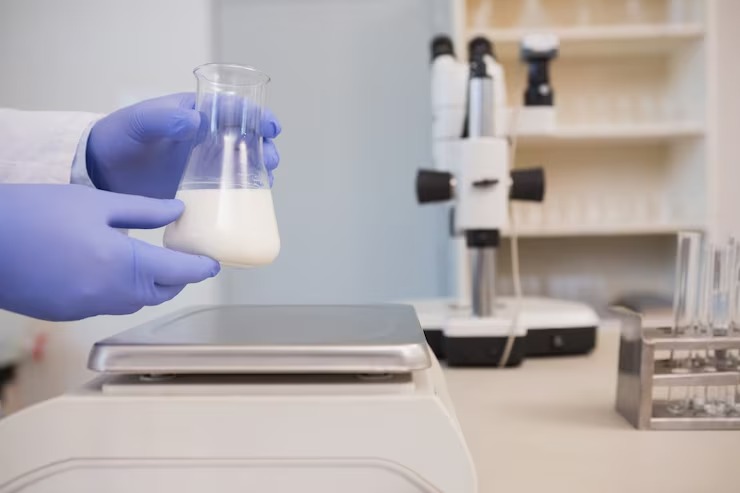As someone who has spent years working closely with the dairy industry, I can confidently say that ensuring milk safety is not just about maintaining quality—it’s about protecting public health. One of the key ways we achieve this is through milk testing laboratories. Many people ask me: can a milk testing laboratory detect contaminants? From my experience, the answer is a resounding yes. Let me walk you through how this works, why it’s essential, and what it means for both dairy producers and consumers.
Understanding Milk Contaminants
Milk is a highly nutritious product, which also makes it a potential breeding ground for contaminants if not handled properly. Contaminants can range from microbial threats like bacteria, yeast, and molds to chemical residues such as antibiotics, pesticides, or heavy metals. As a dairy professional, I’ve seen firsthand how even a small level of contamination can compromise safety, shelf life, and consumer trust.
Milk testing laboratories play a crucial role in identifying these harmful substances. They use a combination of advanced testing methods and equipment to detect contaminants before milk reaches the consumer. The early detection of contaminants not only ensures safety but also helps dairy farms maintain compliance with food safety regulations.
How Milk Testing Laboratories Detect Contaminants
When I first started working with dairy labs, I was amazed at the sophistication of their testing procedures. Milk testing laboratories employ a variety of techniques depending on the type of contaminant being analyzed. For microbial contamination, they often use methods like culture-based techniques, PCR (polymerase chain reaction), and immunoassays. These methods allow labs to detect harmful bacteria such as Salmonella, Listeria, and E. coli with high accuracy.
Chemical contaminants require different approaches. Techniques like High-Performance Liquid Chromatography (HPLC) and Gas Chromatography-Mass Spectrometry (GC-MS) are commonly used to detect residues from antibiotics, pesticides, or other chemicals. These sophisticated technologies enable labs to quantify even trace amounts of harmful substances, which is vital for maintaining safety standards.
From my perspective, the combination of microbial and chemical testing provides a comprehensive overview of milk quality. Without such testing, it would be nearly impossible to guarantee the safety of milk products on the market.
The Role of Standardized Protocols
One of the things I’ve come to appreciate about reputable milk testing laboratories is their strict adherence to standardized testing protocols. These protocols ensure that results are reliable, repeatable, and legally defensible. Standardization is essential because milk quality can fluctuate due to numerous factors, including seasonal changes, feed variations, and handling practices.
A well-structured laboratory will also implement quality control measures, including regular calibration of equipment, proficiency testing for lab personnel, and validation of testing methods. This meticulous attention to detail reduces the risk of false positives or negatives, ensuring that the milk passing through the lab meets stringent safety standards.
Real-World Examples of Contaminant Detection
I recall one instance where a dairy farm I worked with faced a sudden spike in somatic cell counts in their milk. Initially, the cause was unclear, but a milk testing laboratory quickly pinpointed bacterial contamination in one of the holding tanks. By identifying the specific bacteria responsible, the farm was able to take corrective measures, sanitize equipment, and prevent further contamination. This real-world example illustrates how timely detection by a milk testing lab can save a farm from potentially serious financial and reputational damage.
Chemical contaminant detection is just as critical. I’ve observed cases where residues of veterinary antibiotics appeared in bulk milk. Without lab testing, these residues could have reached consumers, potentially causing allergic reactions or contributing to antibiotic resistance. A milk testing laboratory flagged the contamination, allowing the farm to adjust medication practices and prevent compromised milk from entering the supply chain.
Choosing the Right Laboratory
Not all milk testing laboratories are created equal. When I work with dairy farms, I emphasize the importance of selecting a laboratory that is accredited, experienced, and capable of handling both microbial and chemical analyses. For instance, Kendrick Labs, Inc has consistently demonstrated expertise in comprehensive milk testing services. Their ability to detect a wide range of contaminants provides peace of mind for both producers and consumers alike.
When looking for a milk testing lab, I suggest considering the following factors:
- Accreditation: Ensure the lab is certified by recognized authorities.
- Methodology: Verify that they use up-to-date, validated testing methods.
- Turnaround Time: Fast results are critical for preventing contaminated milk from progressing further down the supply chain.
- Support: Choose a lab that provides consultation and guidance on results interpretation.
Benefits of Regular Milk Testing
From my experience, regular testing of milk is one of the most proactive steps a dairy operation can take to maintain product safety and quality. The benefits extend beyond regulatory compliance. Consistent testing helps identify trends in contamination, allowing farms to implement preventive measures rather than simply reacting to problems.
For example, microbial testing can reveal seasonal spikes in bacterial growth, prompting adjustments in cooling and storage practices. Chemical testing ensures that feed, medication, and environmental factors do not introduce harmful residues into milk. By regularly testing milk, dairy producers can maintain consumer trust and avoid costly recalls or fines.
Going Beyond Contaminant Detection
Milk testing laboratories don’t just stop at detecting contaminants. Many labs also provide nutritional analysis, monitoring of milk protein and fat content, and assessments of somatic cell counts. In my work, I’ve found this additional data invaluable for improving overall milk quality. By combining safety testing with quality monitoring, dairy farms can optimize production processes while maintaining the highest standards of safety.
Moreover, the insights gained from lab testing allow for better transparency throughout the supply chain. As a producer, I can confidently provide customers and retailers with verified information about the quality and safety of the milk we deliver. This transparency builds trust and enhances the brand reputation of the dairy operation.
Encouraging Industry Best Practices
Over the years, I’ve learned that the presence of a reliable milk testing laboratory encourages better practices at every level of production. When farmers know their milk will be analyzed rigorously, they are more likely to follow proper hygiene protocols, maintain equipment, and monitor animal health closely. This proactive approach benefits everyone—from producers to consumers—by minimizing risks associated with contaminated milk.
Conclusion
In my experience, the answer to whether a milk testing laboratory can detect contaminants is unequivocal. Through advanced testing methods, standardized protocols, and diligent quality control, these laboratories provide an essential service that safeguards public health and ensures product integrity.
By choosing a reputable lab like Kendrick Labs, Inc, dairy producers can identify microbial and chemical contaminants early, implement corrective measures, and maintain trust in their products. Regular testing isn’t just a regulatory requirement; it’s a proactive approach to ensuring the milk reaching consumers is safe, nutritious, and of the highest quality.
If you are a dairy producer or simply want to ensure your milk is free from harmful substances, I highly recommend considering milk testing services. Go to the website and explore how professional testing can safeguard both your operations and your customers. From my perspective, partnering with a capable milk testing laboratory is one of the smartest decisions any dairy operation can make.

